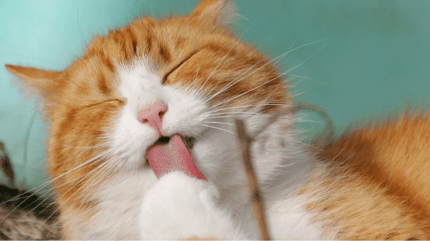Why grooming is good for our cats
It seems like cats spend half of their time awake, preening and cleaning themselves. Most cats take great pride in their appearance and love a grooming session. A cat’s body is extremely supple which enables them to flex and bend to reach all body parts easily. Their tongues are covered with spines that point backwards, designed perfectly to remove dirt and loose hair from their coats.
Certainly, this doesn’t mean that you cannot lend a hand in their beautifying routine. Brushing your cat gives you not only the chance to spot any health issues but also to spend time bonding with your kitty.
Grooming all breeds of cats
Brushing is essential to maintain feline health, no matter if your cat has long or short hair. A short-haired cat may not suffer from matting of the coat, but regular brushing will reduce hair shedding. Likewise, a long-haired cat will need more frequent brushing. Their hair tends to mat and tangle more easily. Daily brushing is a necessity.
The benefits of grooming
Frequent brushing distributes the natural oils that maintain coat and skin health Brushing prevents any tangles before they begin to mat. It also removes lots of excess hair Regular combing gives you the opportunity to inspect for parasites, such as ticks and fleas A grooming session will almost certainly increase the bond between owner and kitty A daily spruce up can pacify your cat and make her less anxious about being handled.
How long should grooming take
Regular grooming should not take too long, especially if you brush your cat’s fur daily. Keep the session short; you don’t want your cat to be distressed or in pain. Short-haired breeds can get away with combing two or three times weekly. In contrast, a long-haired cat will benefit from daily brushing.

Use the right tools
One of the main things to remember when selecting grooming equipment is that your cat has very thin and sensitive skin. Use combs and brushes that are suitable for the type of coat your cat has. Be conscious of how much pressure you use when brushing and use a soft-bristled brush or a metal comb.
The grooming process
First of all, make sure your cat is quite stable and won’t fall over. Spend some time relaxing your cat by giving treats and stroking her. Be calm and relaxed yourself, or your kitty will sense your anxiety.
Speak gently and quietly to the cat and above all give reassurance. Allow your cat to smell the grooming brush then begin at her head, brush following the direction of the fur. If she seems to like this, move to her shoulders.
Many cats are quite sensitive when it comes to having their bottoms or their backs brushed. Your cat will let you know if she’s not happy but certainly monitor her body language. To ensure that this is a positive experience in your kitty’s eyes, reward her with small treats.
Finally, you can move onto using a metal comb, but first, let the cat sniff at this. If you discover any knotted fur, either cut the knot away or tease it with your fingers, don’t pull with the comb.

When to stop grooming
Your cat may be impatient during the grooming process. Look out for a change in body language, especially fidgeting and twitchy behaviour. If your cat begins to grumble or growl, she is letting you know she is running out of patience. If you think your cat is unhappy, this is the time to stop combing. It’s better to groom in short sessions and to have an enjoyable and purrfect grooming experience.

